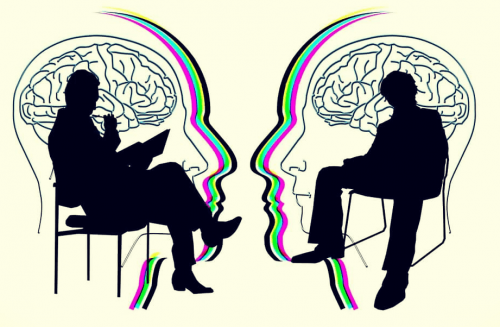Case histories are documents that therapists prepare. A case history includes information about each individual client’s therapy. It starts with the client’s first visit, includes their own evaluation of their condition, any subsequent therapy, and, finally, the follow-up after therapy has finished.
Each therapist has their own personal way of building a case history. Case histories are confidential documents. Therefore, if the client should ask for similar documentation as proof of their therapy, the therapist will prepare a different report.
Case histories are a very useful psychological tool for the therapist. In the reports, they make recommendations that can be quite decisive for the development of any future therapy for the client.
What are case histories for?
A client’s case history provides information from their various therapy sessions. From their very first session onwards, the therapist notes everything of relevance in the case history. In fact, it’s a tool that allows the therapist to shape all the information they receive from their client that often comes in thick and fast.
Later, everything contained in the client’s case history will help the therapist complete their functional analysis. Writing a case history also ensures that the therapist doesn’t have to rely on their memory and there’s less risk of them leaving any information out. Furthermore, therapists often have a number of clients. For this reason, they might often read through the relevant case histories before each session. This refreshes their memory on how the therapy’s been progressing and any particular improvements or difficulties they’ve observed.
In theory, it might seem easy to put all the information from each session into the case history. However, for the case history to be a useful document, some things should be included and others omitted.
What information do they include?
Some relevant aspects to include in case histories include:
Identification of different problem areas
The therapist should identify these areas before writing up the case history. For example, family, social, mood, etc. This makes the case history easier to read. Furthermore, by organizing it in this way, the therapist will probably also organize the goals to be worked on and the functional analysis in the same way.
Information regarding past events
It isn’t necessary for the case history to include a multitude of details. However, it should include the client’s social and family history and the therapy that’s been carried out so far. The therapist should also include any information they find of particular interest.
Information about the therapy sessions
This should include information about how the client’s week has been, what they’ve had problems with, and any emotions they haven’t been able to control. In addition, it includes what happened in the session and what techniques the therapist used.
Client tasks
The case history should include a section of tasks the client’s been asked to perform the following week. These should include both written and practical tasks. For example, self-reporting methods like keeping a diary and writing down irrational thoughts, as well as any practical suggestions the therapist may have given the client in the session.
Therapist tasks
This involves tasks the therapist wants to include in the next session. For instance, they might plan to review the irrational thoughts from the client’s list and to restructure at least three of them. They also might plan to ask the client about any self-harm incidents or particular events in their social and family life. The case history, in fact, includes everything that the therapist wants to include in the next session.
Behavioral sequences
In cognitive-behavioral therapy, before deciding on the goals of the therapy, the therapist starts preparing a functional analysis. With this, they determine which elements of the client’s sequence of behaviors they need to change. The therapist may or may not conclude the functional analysis by the final evaluation. However, they should always include a small section of it in each of their case history entries. This way, they build an ongoing picture of the client’s behavioral sequences as they observe them in each session without having to wait until the final evaluation. The information can always be modified later on if necessary.

Case histories are also useful for other professionals
Writing case histories is necessary for intra-psychological communication. In other words, communication between relevant professionals. For example, if a client’s unable to continue with their therapy because they move to another town, the therapist in the new location needs information about them to continue any treatment.
Case histories make up this information. In effect, a case history acts as a kind of bridge between the previous therapist and the new one. In fact, it helps make the change from one therapist to another a smooth one and guarantees consistent treatment for the client.
The benefits of case histories
- The clinical eye. The therapist doesn’t only write down the information that their client tells them. In fact, they also write down their own impressions. Such notes can be extremely helpful to the new therapist. For this reason, the therapist should never be afraid to include their own thoughts, even if they haven’t actually confirmed them as fact. After all, such information can always be modified or corrected at a later date.
- Treatment plan and techniques. When the therapist and patient have completed the primary evaluation, the therapist can include goals in the case history. For example, “To give Clara basic social skills so that she’s able to feel comfortable in social situations”. Next to the goal, the therapist should write the techniques that are going to be used to achieve it. These might be cognitive restructuring, modeling, or exposure with response prevention. The therapist can include all the goals their client wants to achieve and how they intend to help.
Case histories contain a lot of client information. For this reason, no names ever appear in them. In addition, other information might be changed such as place of residence or age to make the data as impersonal as possible. This is to cover the eventuality of the document going missing and falling into the wrong hands. The therapist should store the documents in a locked cabinet and avoid removing them from the workplace as much as possible. In addition, if they intend to send the documents over the Internet, they should encrypt them.
The post Case Histories: What Should They Include? appeared first on Exploring your mind.


















Comments